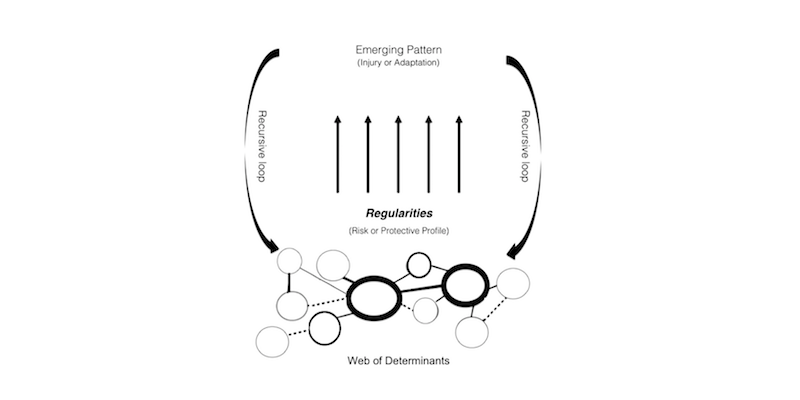
Meshworks are an evocative metaphor for the organism. Meshworks elegantly represent the material and non-material aspects of the organism, as well as the material and non material environment in which the organism exists.
As interconnecting networks functioning as a complex whole, meshworks are analogous to systems.
Systems thinking is a general conceptual orientation concerned with the interrelationships between parts and their relationships to a functioning whole, often understood within the context of an even greater whole. It is ancient in origin and familiar to us all, but it is also something very modern. Trochim et al. (2006)
Emergence is a key feature of the systems approach. Emergence is not readily predicted and is mostly non-linear. The interactions within a system and between seemingly unrelated factors often generate unanticipated change.
Systems are characterised by the following features:
(i) complexity in the system arises from multiple webs, relationships, and interactions between a large number of heterogeneous factors
(ii) the knowledge associated with a given actor, agent or factor in the system is limited and localised to its respective sub-system or level
(iii) history, plays an important role in the system, and past events explain present and future behaviour
(iv) interactions in the system can include non-linear self-reinforcing and self-correcting feedback loops (i.e. reciprocity), which might produce an emergent effect (i.e. small initial events can reverberate exponentially and produce a disproportionately larger consequence in time, otherwise known as ‘sensitivity on initial conditions’)
(v) complex systems are homeostatic: they persist, adapt, and are continually in flux to enable reconfiguration in response to internal or external influence and change
(vi) systems are counterintuitive, and aetiological processes can be vastly distant in time and space
(vii) systems can be resistant to obvious solutions.
The corollary of these characteristics is that emergent phenomena arise from the many perceptions, decisions, actions and interactions between actors and agents across the entire system. Hulme & Finch (2015)
For instance, subtle changes in resting states, breathing and posture reverberate exponentially through the organism – transforming embodiment.
The transformative potential of emergence is a foundational motif of MESHWORK.
FEATURED IMAGE:
NFN Bittencourt et al. Complex systems approach for sports injuries: moving from risk factor identification to injury pattern recognition – narrative review and new concept (2017).
